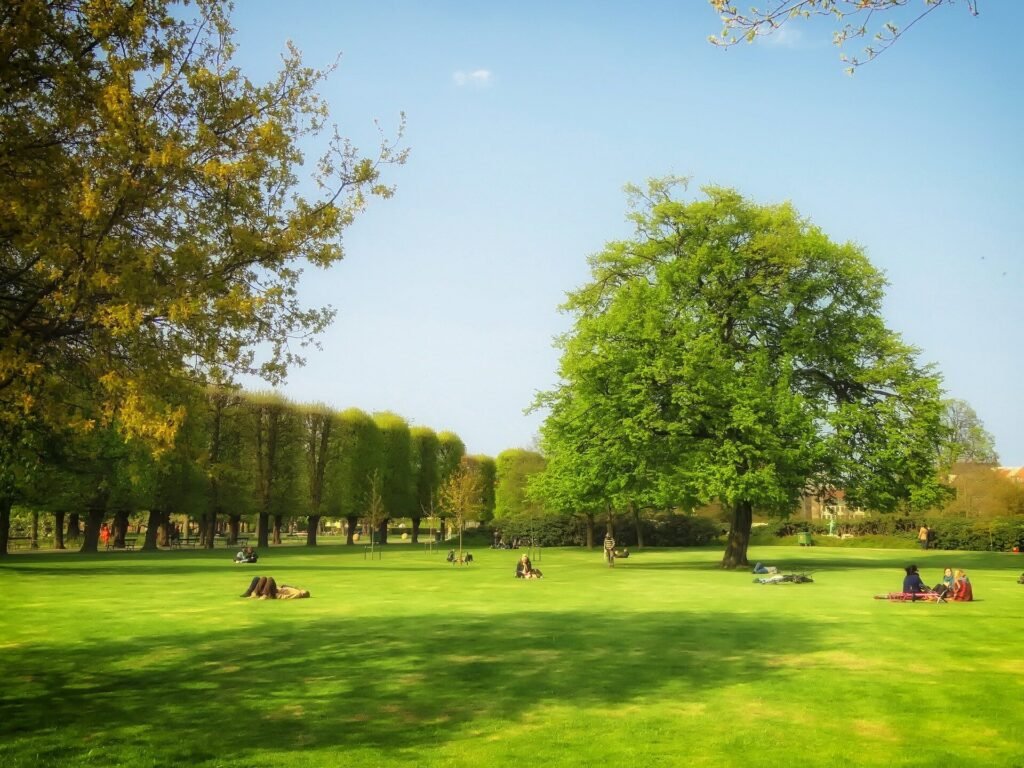A groundbreaking research project has revealed that communities with higher levels of green space experience lower rates of police violence. This study is the first of its kind to establish a significant correlation between the presence of green spaces and fatal police shootings, demonstrating that areas facing social and economic disadvantages benefit the most from these green environments.
“This is a revolutionary finding. To our knowledge, no one has delved into this area of research before,” stated William Sullivan, a landscape architecture professor at the University of Illinois Urbana-Champaign and a member of the research team. “It introduces a new avenue of investigation into the advantages of living in greener spaces.”
The research team, which included Bin Jiang from the University of Hong Kong and doctoral student Jiali Li, analyzed data on green spaces and fatal police shootings in 3,100 counties across the U.S. over a 5-year period from 2016–2021. They also considered social deprivation measures in disadvantaged communities to provide a broader social context, encompassing factors such as poverty, education levels, household structure, and employment rates.
Published in the journal Environment and Behavior, the research “indicates that the quantity and quality of landscape play a crucial role in creating safer neighborhoods and regions,” according to Jiang.
The team’s comprehensive analysis, which included various control variables, aimed to explore the relationship between green spaces and police shootings. Surprisingly, the results revealed a negative correlation between greenness and fatal police shootings, with a stronger association observed in areas with higher social deprivation levels.
The researchers proposed several mechanisms through which green spaces may reduce violence, including crime prevention, improved mental health, enhancing community well-being, and promoting outdoor social interactions.

Mental fatigue can impair individuals’ ability to control impulses, recognize social cues, and maintain positive moods, potentially leading to aggressive behavior. Sullivan suggested that greener environments may help alleviate stress for police officers, enabling them to engage more effectively with communities and reduce the likelihood of violent encounters.
Additionally, green spaces have been linked to stronger community bonds, increased socialization, and enhanced neighborhood safety, fostering a sense of care and security among residents.
While the benefits of green spaces are evident, the researchers emphasized the importance of quality over quantity, noting that poorly maintained green sites could pose safety risks. They called for further research to explore the underlying mechanisms behind the relationship between green spaces and police violence.
The study’s findings offer valuable insights for urban planners, developers, and landscape architects seeking to enhance community well-being through green infrastructure. By investing in greener neighborhoods, communities can potentially reduce violence and promote healthier, safer environments.
However, the researchers acknowledged that addressing systemic issues within the criminal justice system, implementing community policing strategies, and providing adequate training and support for law enforcement officers are essential steps in reducing police-related violence.
More information:
Jiali Li et al, Greenness, Deprivation, and Fatal Police Shootings: A Five-Year Nationwide Study in the United States, Environment and Behavior (2025). DOI: 10.1177/00139165251316106
Citation:
New study finds link between green spaces and police violence (2025, April 24) retrieved 24 April 2025 from https://medicalxpress.com/news/2025-04-link-green-spaces-police-violence.html
This document is subject to copyright. Apart from any fair dealing for the purpose of private study or research, no part may be reproduced without the written permission. The content is provided for information purposes only.


